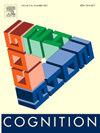Large-scale examination of the benefit and cost of spatial attention and their individual variability
IF 2.8
1区 心理学
Q1 PSYCHOLOGY, EXPERIMENTAL
引用次数: 0
Abstract
Spatial attention—the ability to prioritize relevant regions in the environment—is crucial for human cognition and has accordingly been studied extensively. However, large population samples have seldom been used, leaving inter-individual variability largely unexamined. This is especially true for the distinction between attentional benefit (improved performance when attending the correct location) and cost (impaired performance when attending the wrong location), which is critical for distinguishing facilitatory from inhibitory mechanisms. This distinction is sometimes avoided because it requires a baseline condition and choosing a truly neutral cue for this condition can be challenging. Here, we recruited a sizable participant pool (N = 662) across four experiments. We combined an acuity task with valid, invalid, and neutral pre-cues of different types and analyzed the averaged attentional benefits and costs and their inter-individual variability. We found robust attentional benefits, but attentional costs depended on inter-stimulus distance, highlighting the importance of employing neutral cues. Similar patterns of attentional benefit and cost emerged for the experiments that used different types of neutral cues. Moreover, when neutral cues were compared directly no difference in performance was found. These findings suggest that the neutral cue's characteristics are not critical. Hierarchical Bayesian analyses revealed true qualitative individual differences; while most individuals showed effects in the expected direction, some exhibited effects in the opposite direction. This finding emphasizes the complexity of attentional allocation, suggesting that a comprehensive account of spatial attention needs to incorporate several underlying mechanisms including factors that may result in attentional effects in the opposite direction.
空间注意力的收益和成本及其个体可变性的大规模研究
空间注意-在环境中优先考虑相关区域的能力-对人类认知至关重要,因此被广泛研究。然而,很少使用大量的人口样本,这使得个体间的差异在很大程度上没有得到检验。这一点尤其适用于区分注意力利益(注意正确位置时的表现提高)和成本(注意错误位置时的表现受损),这对于区分促进机制和抑制机制至关重要。这种区别有时会被避免,因为它需要一个基线条件,而为这种条件选择一个真正中性的球杆是很有挑战性的。在这里,我们在四个实验中招募了一个相当大的参与者池(N = 662)。我们将不同类型的有效、无效和中性预提示结合在一起,分析了平均注意收益和成本及其个体间差异。我们发现了显著的注意效益,但注意成本取决于刺激间距离,这突出了使用中性线索的重要性。在使用不同类型的中性线索的实验中,也出现了类似的注意力收益和成本模式。此外,当直接比较中性线索时,没有发现表现上的差异。这些发现表明,中性线索的特征并不重要。层次贝叶斯分析揭示了真正的定性个体差异;虽然大多数人表现出预期方向的影响,但有些人表现出相反方向的影响。这一发现强调了注意力分配的复杂性,表明对空间注意力的全面解释需要结合几个潜在的机制,包括可能导致相反方向注意力效应的因素。
本文章由计算机程序翻译,如有差异,请以英文原文为准。
求助全文
约1分钟内获得全文
求助全文
来源期刊

Cognition
PSYCHOLOGY, EXPERIMENTAL-
CiteScore
6.40
自引率
5.90%
发文量
283
期刊介绍:
Cognition is an international journal that publishes theoretical and experimental papers on the study of the mind. It covers a wide variety of subjects concerning all the different aspects of cognition, ranging from biological and experimental studies to formal analysis. Contributions from the fields of psychology, neuroscience, linguistics, computer science, mathematics, ethology and philosophy are welcome in this journal provided that they have some bearing on the functioning of the mind. In addition, the journal serves as a forum for discussion of social and political aspects of cognitive science.
 求助内容:
求助内容: 应助结果提醒方式:
应助结果提醒方式:


